When it’s 90+ degrees outside, you’ve gotta get a little creative when it comes to doing stuff around the city. The subway will always be a crap shoot - random stations are sweltering (always Broadway-Lafayette tho 🥵) and random cars won’t have a/c. Parks are nice, but some of them contain startlingly little shade and enough pavement to roast you. Movie theaters are a safe bet, but they’re not the best for a social hang. This is where museums come in! When everything in NY seems expensive, many museums offer cooling and entertainment under a free or pay-what-you-wish model. Con Ed could never. So this week, I beat the heat by visiting a new-to-me museum. Can you guess where I went?
The other part of this week’s newsletter will focus on a not so well known figure in the fight for LGBTQ+ rights - Ernestine Eckstein. I actually forgot that I wrote a short piece on her nearly 7 years ago back when I was crafting my little guerilla NYC history column in my company’s Slack, so I went back and did some additional research to refresh my own memory of her contributions.
Cooper Hewitt, Smithsonian Design Museum 2 E 91st St, New York, NY 10128 Neighborhood: Carnegie Hill Open: Everyday, 10am-6pm Admission: $22 (free tickets available on Culture Pass)
Lorenzo and I decided to spend our Juneteenth day off at the Cooper Hewitt Museum to check out the current Smithsonian Design Triennial - Making Home. I’ve never been to the Cooper Hewitt because it’s just so hard to pass up visiting The Met down the block, but I figured everyone would be flocking to The Met on a day off and maybe Cooper Hewitt would be less busy; I was right. I reserved free tickets on Culture Pass on the subway ride uptown and we were in! I will note that the person checking us in didn’t even look at my Culture Pass receipt, so maybe you can just lie and say you got one? Maybe I shouldn’t be encouraging fraud, but this feels like a low enough level offense.
I’m also kind of ashamed to admit that I never realized this museum was literally Andrew Carnegie’s mansion. After his family was no longer living in it, the building changed hands a few times and eventually ended up in the Smithsonian’s care in the 1960s. At this time, a tiny design museum housed in the Cooper Union building in Astor Place was struggling and about to close. That museum was started by several granddaughters of the politician and businessman Peter Cooper and it housed “functional art” such as furniture and lighting, as well as wallpaper, textiles, and graphic works. A bunch of fancy business dealings later and the Cooper Union Museum was absorbed into the Smithsonian’s portfolio becoming the Cooper-Hewitt Museum of Design. It’s the only Smithsonian museum that charges an admission fee.
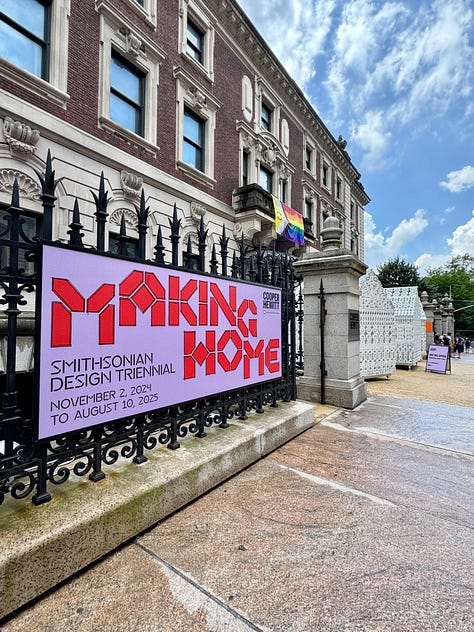
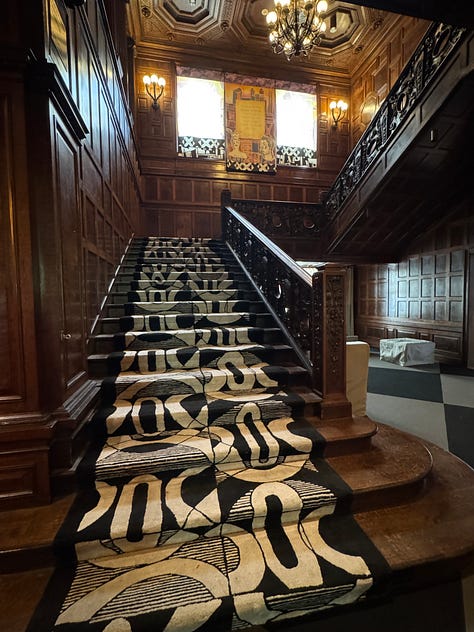
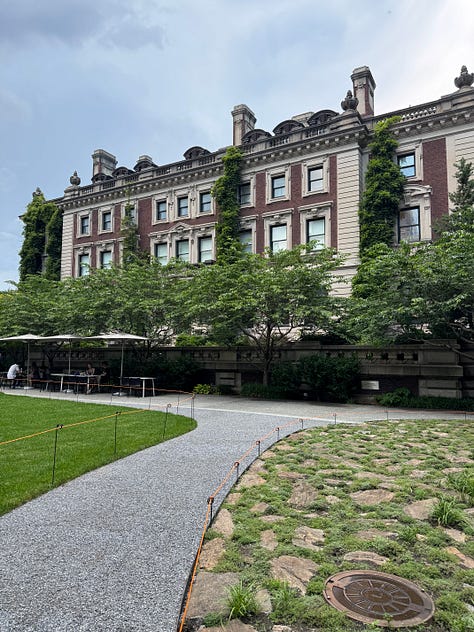
Their current exhibit, Making Home, features 25 site-specific works divides the museum into three parts and runs thru Aug 10:
🏡 “Going Home” (ground and first floor) explores how domestic spaces shape and reflect people’s experiences, behaviors, and values through reinterpretations of diverse home environments.
👀 “Seeking Home” (second floor) explores unconventional definitions of home through installations that examine cultural heritage, the body, imagined landscapes, and refuge.
💪 “Building Home” (third floor) reimagines housing beyond the single-family model, using large-scale installations to explore community, land stewardship, cultural histories, and contemporary challenges like housing precarity and aging.
The ground/first floors (Going Home) were at once the most exciting and most boring parts of the exhibit for me. I loved that these areas seemed to be the least modified in the museum and contained lots of old Carnegie touches. I felt like I was actually in a Gilded Age mansion and the exhibit materials were sort of a secondary interest to me. So many of the doorways were narrow and short, not like you’d expect in a museum, because they previously led to pantries or closets that had been turned into exhibit spaces. I did really enjoy the Game Room, which was in a small room off of the library. I love funky furniture and board games so I spent a lot of time reading every single thing on the “Philanthropy” game board and accompanying wall art.
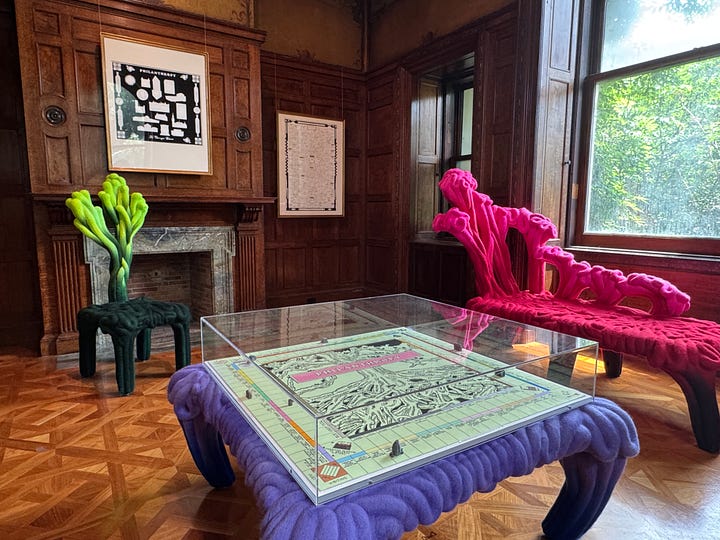

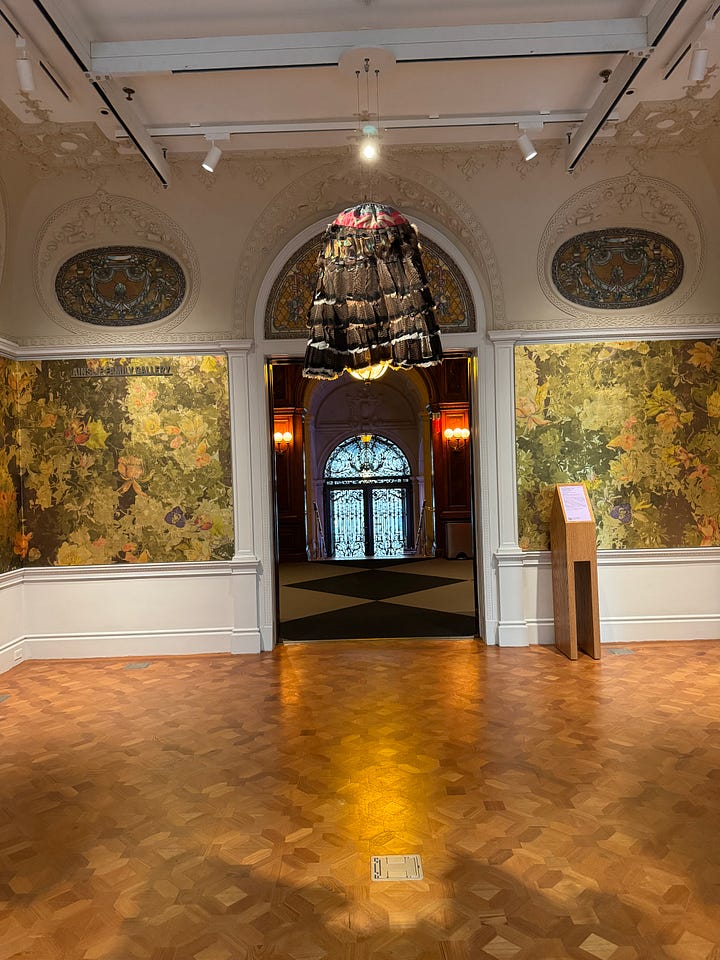

I generally don’t like when movies are playing in museums; this seems like it goes against everything you knew about me and I don’t know how to explain why I don’t like this. However, I actually really liked a lot of the movies that were playing at Cooper Hewitt. Going Home had a very cool screen that came down midway in one of the rooms that really just featured a walkthrough of a home (a la MTV Cribs) and I think I mostly just enjoyed the placement of the screen and how what was on the screen contrasted with the mansion’s surroundings. That sounds so pretentious and again, I don’t know how to explain it, but I liked it. But my favorite movie playing was “Dream Homes”, part of the Seeking Home exhibit. It featured groups of queer people who found each other, created a community, and found a place they could call home (literally, they fixed up shitty houses so they could live in them). I think a lot about how the circumstances of one’s birth are completely random and how lucky I am to have been born just outside NYC, with all of my white privilege, and to have found so many people nearby that I’m happy to call my friends. I’ve had to do a good amount of “seeking” in my life, but I’m always in awe when watching folks create a chosen home or family because I know that’s hard work.
The Building Home floor was also pretty cool and features literal examples of alternative homes that had been built. One featured a building technique native to Hawaii, another featured blocks of a home that was unearthed in Southern Colorado, and one grappled with the question “is a biobank a home?” My two favorites, though, were examples of homes yet to be built. The Architecture of Reentry proposed mobile refuge rooms to house previously incarcerated individuals, some of whom participated in the design. These rooms are easy to assemble and provide folks with some privacy (and dignity) as they prepare to reenter the world. Lorenzo’s favorite was the proposed senior living residences in Aging and the Meaning of Home. This exhibit proposed what an assisted living community might look like as it houses seniors of differing interests and abilities. It actually looked like a really nice place to retire to, if I’m ever able to retire. These last two exhibits were also super interactive and literally asked me to touch things, which I love. How do I get the brunch & touch girls to invite me on an outing??

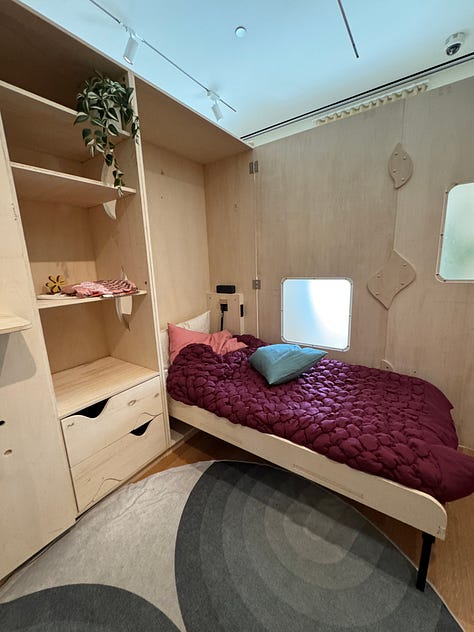
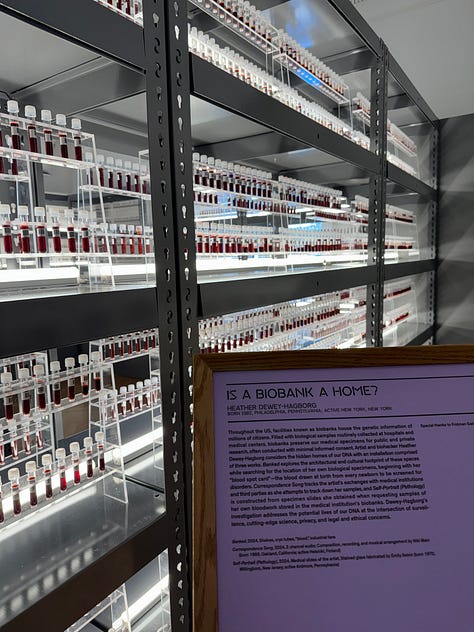
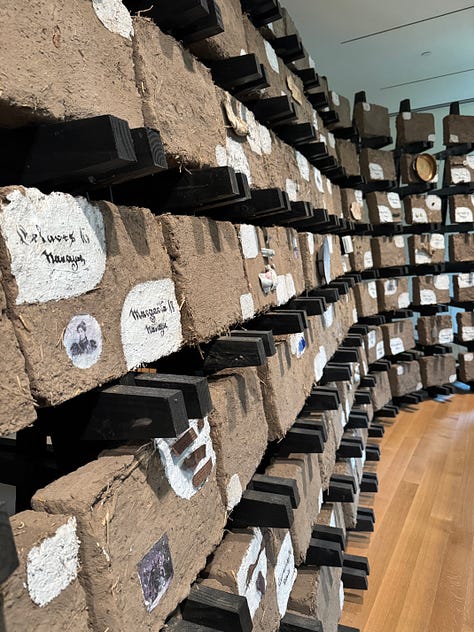
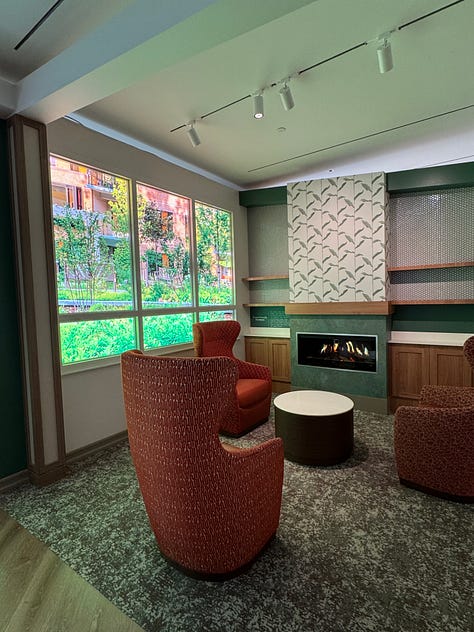

I tend to like museums that make me think and grapple with philosophical questions, and this exhibit actually generated a lot of introspection! I love art as much as the next person, but I just prefer historical context philosophy so much more (one can only wax poetic about chiaroscuro for so long, ya know?). Oh also, to be expected from a design museum, but the bathrooms downstairs were fabulous.
Ernestine Eckstein
1941-1992
LGBTQ and Civil Rights ActivistAlthough Ernestine Eckstein was only in NYC for a short time, I feel like her contributions were enough to earn her a spot in this newsletter! Born in Indiana in 1941, her given last name was Eppenger, but like many queer activists of the time she used an alias for safety. “I will get in a picket line, but in a different city,” she said, a subtle but powerful acknowledgment of the risks of being “out” Add to that Ernestine’s identity as a Black woman living in the South and you can understand why she felt the need to protect herself.
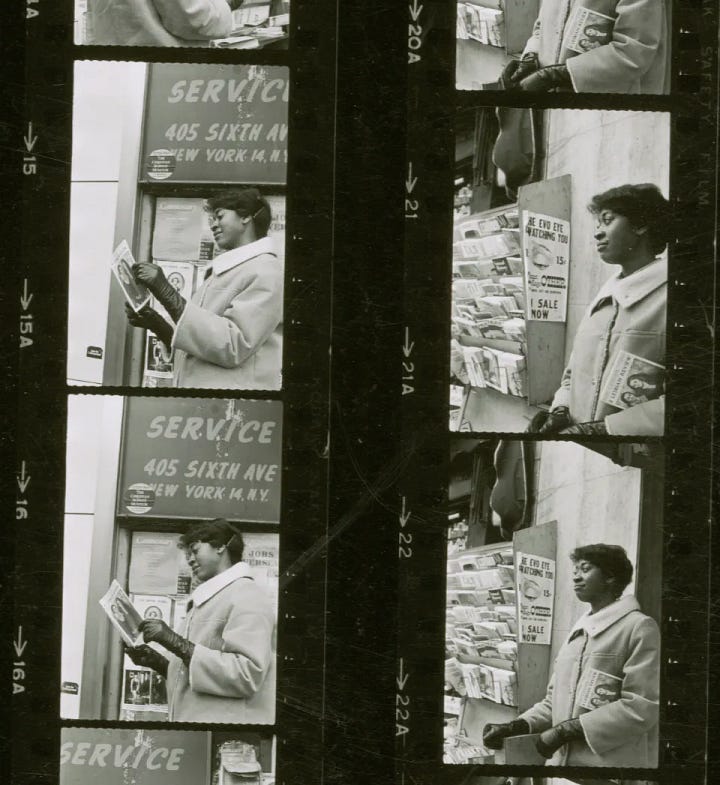
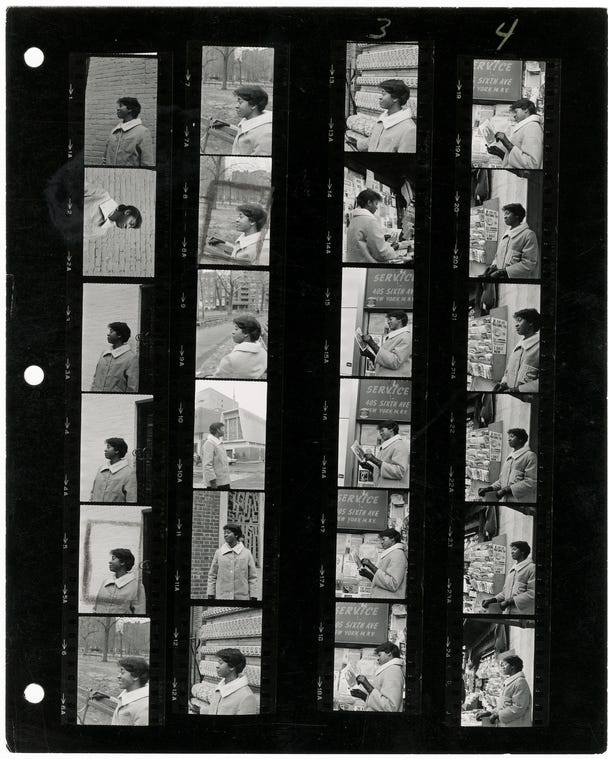
Ernestine moved to NYC in 1962 at age 22 and she described that time in her life as being a moment of awakening: "Until after I came to New York…I didn't know the term gay!…Then all of a sudden things began to click … the next thing on the agenda was to find a way of being in the homosexual movement." She began attending meetings of the Mattachine Society, which was a gay rights org founded in 1950, and then later became involved in the Daughters of Bilitis (DOB), the first lesbian civil and political rights org in the US. To Ernestine, getting involved in LQBTQ+ activism was the obvious choice. As a Black woman, she had been fighting for her civil rights in regards to her race her entire life, so this was merely an extension of that activism as civil rights should naturally extend to those of different sexual orientations, too.
Ernestine would go on to march in the Annual Reminders; these were a series of early pickets organized by gay orgs held each year on July 4 from 1965 through 1969 at Independence Hall in Philadelphia. These early protests were precursors to the Stonewall uprising, and they laid groundwork for what would become the Christopher Street Liberation Day March (today’s Pride March). Often, Ernestine would be the only Black woman on the picket line, pushing for what we now call intersectional activism long before the term existed.
When Ernestine was elected VP of the of the DOB NY Chapter Marcia Gallo noted "Her [Eckstein’s] plan was to reach out to women who saw the gay struggle as linked to other civil rights issues and hope that during her time as vice president of the local chapter she would help build a more social action oriented group". Ernestine helped steer the DOB toward more public, activist strategies, even though it sometimes put her at odds with the org’s more conservative “old guard” who preferred to negotiate behind closed doors with doctors and psychologists (homosexuality was labeled a mental illness until 1973). Ernestine and some of the younger more “activist-minded” folks wanted to lobby government officials and picket more publicly so they could not be ignored. When the DOB pulled out of the East Coast Homophile Organization (ECHO) because they thought were involved in too many protests, Ernestine continued marching in pickets on the east coast.

Ernestine eventually got tired of all the arguing over too-soft strategies and tactics in the DOB and left NYC to advocate for women of color on the west coast. She joined the radical, activist group Black Women Organized for Action (BWOA) and fit in well with their action-oriented approach. In the above edition of The Ladder, Eckstein was quoted as saying, "Picketing I regard as almost a conservative act now. The homosexual has to call attention to the fact that he's been unjustly acted upon. This is what the Negro did." And although this interview in The Ladder was previously thought to be the only account of Ernestine’s activism in her own words, I was also able to find a transcript of the full 5-6 hour interview that was conducted when writing that piece.
The full transcript contains so much wisdom that we take for granted today, but that Ernestine was really trailblazing with back in the 60s. And although her time in NYC might have been short, she was optimistic that things would change.
“Well, you know, I have a lot of faith in New York.”
Me too, girl.
Did you have a stressful week because of *gestures around country*? Maybe an afternoon of singing Sea Chantey’s aboard the Wavetree at South St Seaport is just what the doctor ordered. On the first Sunday of the month thru Oct, a local artist will lead groups through a variety of traditional maritime work songs and ballads. Any attendee is welcome to take the stage to sing and share the chantey of their choice (could be you). Attendees are encouraged to sing along, but you can feel free to just sit back and enjoy the music.
Formosa in Bushwick isn’t my #1 Taiwanese spot, but it’s local and sometimes that trumps all. They’ve also been hosting more events, including this upcoming Dumplings and Drag on June 28. Tickets are $45 and include performances by two Taiwanese drag queens, an order of (8) pork or veggie dumplings (get the pork), and a can of Taiwan Beer. Please remember to bring some $$ to tip your queens!
Land to Sea is hosting a sidewalk summer skewer party on June 27. It’s a walk-in only feast inspired by whole-animal approaches to cooking and eating and I personally would love to absolutely fuck up a plate of pig ear salad and lamb belly. If you can’t decide though, $60 gets you 1 of everything on the menu!
I love the idea of a sip and paint, but I don’t drink alcohol so I always feel a little left out. Enter Steep & Sketch: A Tea Picnic & Art Session - Cherries Edition. A $35 ticket includes a tea tasting, light snacks, and art supplies to help you create a masterpiece using cherries as your muse.
If photography is your medium of choice (and whether you’re a pro or not), you should check out the Museum of New York’s open call for New York Now: After Dark. This exhibition explores the city’s nightlife—from neon-lit streets and subway shifts to dance floors, quiet rituals, and midnight wanderings—through the eyes of today’s photographers. The Museum invites amateur and professional photographers to submit work made since 2000 for consideration. Whether documenting the pulse of nightlife or the stillness of the third shift, they want to see how you frame New York after dark. I’m no pro, but I’ve got some cool photos I’m going to submit! Submissions are open thru Aug 11.
I feel like I’m pretty good at spelling (I came in first place in my school’s first grade spelling bee) but even I’m kind of scared to enter the Brooklyn Spelling Bee on July 1. You’ll be asked to spell local landmarks - Is it McDonough Street or MacDonough Street? Halsay or Halsey? Bruekelyn or Breukelen?! You can compete as teams or individuals, and CBH will help form teams that night so if you’re riding solo. Winners leave with CBH prizes! I’m kinda down to embarrass myself if anyone wants a teammate?
I don’t want to get ahead of myself, but I might be going to Staten Island twice this weekend?? A friend at work is hosting an open mic called the Flo Sho on Fri June 27. Tickets are donation based and start at a suggested $5. I’m also still very interested in the punk mini golf I listed in last week’s newsletter and may try to attend Saturday night. Who’s with me? #statenislandgirlsummer!!






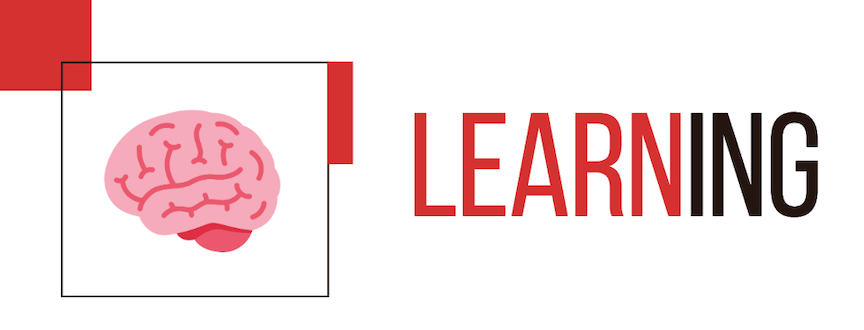
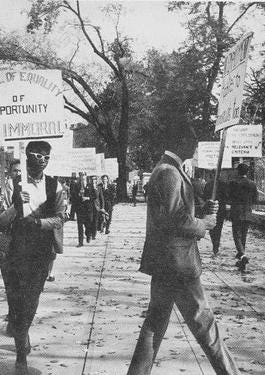

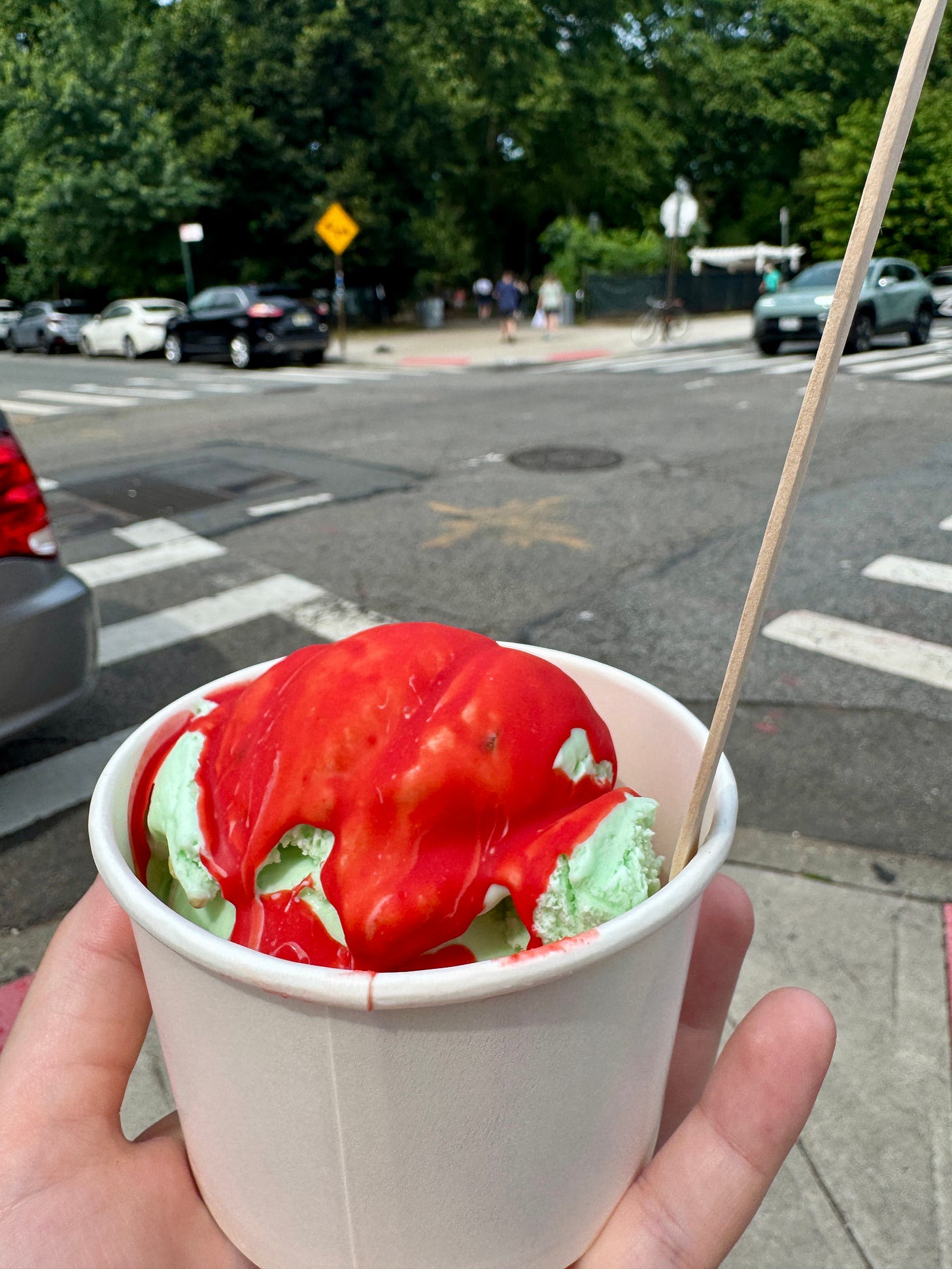
I loved learning about Ernestine! Thanks for sharing her story.
(And I've never been to cooper Hewitt also! Must remedy)
Waiiiiiiit I also don’t like when movies are playing in museums. It takes me out of the museum experience slightly, especially since it’s almost always a 30 minute movie that I’m only coming in halfway through and I can’t follow the continuity and I feel left out… idk, movies are such a specific vibe for me that I just can’t have them interrupting my consumption of other art. I’m sorry!!!